Finding Mono No Aware in Japanese Films
As Filmwell gets under way, I’m traveling through Japan with my family on an extended vacation. And so, it only seems fitting that my first post here deal with Japanese cinema in some regard.
When I reflect on Japanese cinema, I find that one of the things that continually draws me back to it is a sort of gentle melancholy and pensive longing. Granted, this isn’t true of all Japanese films — I don’t know if you’d find it much in violent yakuza films or over-the-top kaiju films — but the ones that have stuck with me over the years are typified by this emotion and seem to contain it in large amounts.
There’s a Japanese phrase that sums up this feeling I’m describing: “mono no aware.” Roughly translated into English, it means “the sadness of things.” It’s not sadness in the sense of depression or angst, but rather, it refers to an awareness of the fragility of existence, of the transient and bittersweet nature of life — which, I’ve found, can make for incredibly beautiful and poignant cinema.
And so, for my inaugural Filmwell post, I thought I’d put together a short list of films that, for me, typify “mono no aware.” Some are animated, some are live action; some are period pieces, some are set in the future — but they all contain within them interesting and often moving examinations of life and its various facets.
After Life by Hirokazu Kore-eda
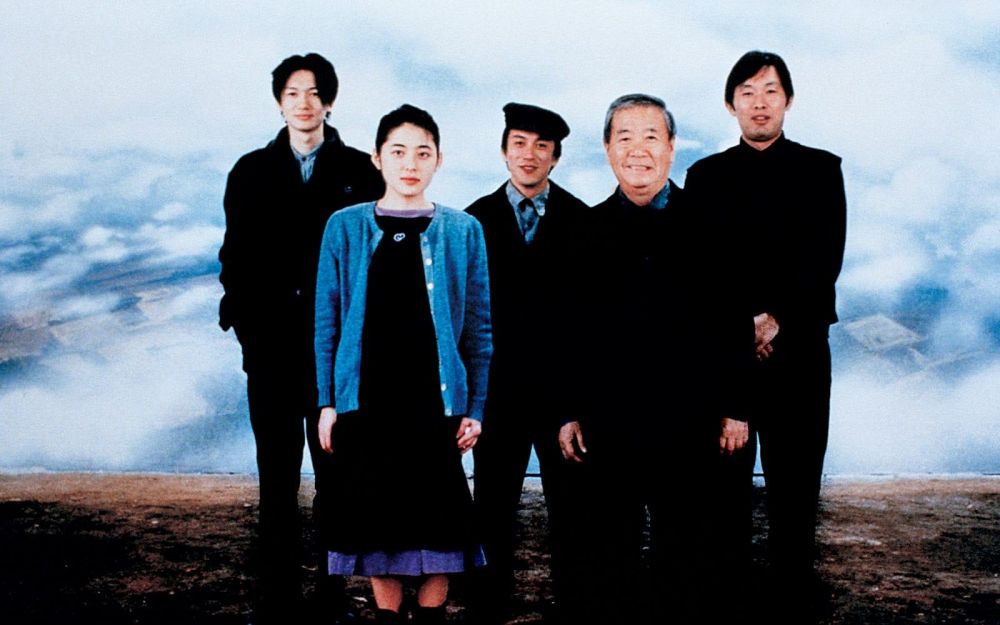
Hirokazu Kore-Eda, one of the world’s great humanist filmmakers, may have appeared on the radar of many folks with 2004’s critically acclaimed Nobody Knows, but six years before that, he directed this intriguing look at life after death.
Set in a way station of sorts between life and death, After Life follows a group of recently deceased individuals and their “counselors,” workers at the way station who help the newly dead review their entire lives. Each of the recently deceased are asked to locate the most important, precious, or influential moment in their life. This moment is then turned into a short movie by the staff, which the recently deceased watch and then relive for the rest of eternity.
Much of the film simply features people recounting their lives, sharing their favorite memories and recollections (much of which was unscripted and culled from the actors actually talking about their real lives). Adding to the drama is a subplot involving one of the way station staff, a man named Takashi, who discovers he has a troubling connection with one of his charges, a revelation that causes him to begin reflecting on his own (non)life and inability to move on to the next stage of existence.
Set in a dilapidated structure in the middle of nowhere, the film’s sparse visuals only add to the film’s meditative air. But it is the recollections of the way station’s “guests” — as they reminisce on life, and what it meant to have lived, fought, loved, and died — that makes After Life the moving and poignant experience that it is, and ultimately, less a film about a death and dying and more about what it means to exist, however fragile that existence might ultimately be.
Haibane Renmei by Tomokazu Tokoro
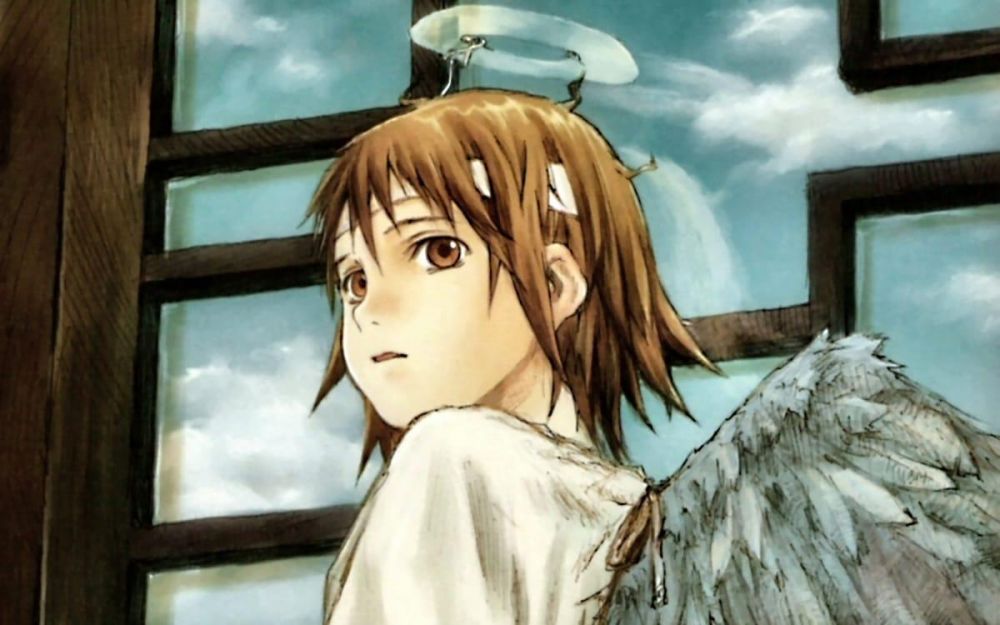
Chances are, when most people think of anime, they think of the extreme: sci-fi or horror titles starring giant robots and ridiculously well-endowed girls that are filled to the brim with sex and violence. Of course, that’s a stereotype, one largely based on the fact that a good deal of the anime that makes it across the Pacific consists of titles that focus on those aforementioned motifs.
The reality is that anime (as well as its literary counterpart manga) runs the gamut, with titles for every interest, theme, and topic, however pure or prurient they may be. Which means there are many titles that may fly under the radar, but are as deserving of the spotlight, if not moreso, than their more “extreme” cousins.
Haibane Renmei is a perfect example of this. Adapted from a self-released manga by Yoshitoshi ABe (Serial Experiments Lain, Texhnolyze), it’s a gently paced, beautifully produced, and thoughtful work. The 13-episode series follows the lives and activities of a group of angel-like creatures called “haibane”, and in particular, their most recent addition, a young girl named Rakka who is trying to find her place in the world.
And what a world it is: the entire series takes place in a town called Glie whose most prominent feature is the giant wall surrounding it. No one can leave or enter the town except for a strange group of silent, masked nomads. This introduces a simple ambiguity that opens up all manner of possibilities for the series’ setting, ranging from post-apocalyptic to the after life. It also imbues the series with a certain otherworldly quality that only increases as Rakka tries to discover more about the nature of the “haibane,” where she came from, why she’s in Glie, etc.
This all makes for a series that is rewarding, even on multiple viewings. The series’ intriguing setting, the delightful characters, and Rakka’s pensive questioning and longing for the truth about her existence are always a joy to watch.
On a sidenote, I had the pleasure of leading a showing of the series at the Flickerings festival a few years back, and it was immensely satisfying to see folks of all ages slowly become entranced by the world of Rakka and the “haibane.” That just confirmed to me that Haibane Renmei is truly an unsung gem, an anime title that could easily sit next to any Hayao Miyazaki discs in your collection.
Vital by Shinya Tsukamoto
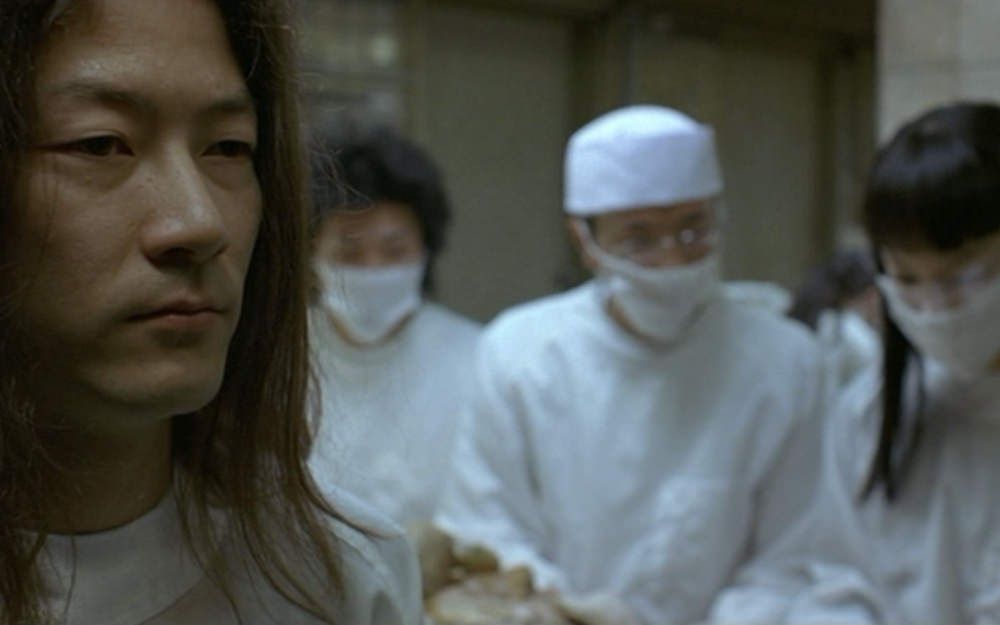
Shinya Tsukamoto exploded onto the cult film scene in 1989 with his dark cyberpunk film, Tetsuo: The Iron Man. Since then, Tsukamoto has developed a reputation as one of cinema’s most transgressive filmmakers, constantly pushing the boundaries with such dark, violent, and sexual titles as Tokyo Fist and A Snake of June. As such, it’s difficult to not be a little wary when you first hear the premise of Vital and that dissection and corpses are featured prominently.
A young man named Hiroshi (Tadonabu Asano) wakes up in a hospital with no memory of who he is. Still recovering from the accident that stole his memory, he stumbles across some medical textbooks and, surprisingly, enrolls in medical school. Despite his intense introversion and sense of alienation, he quickly becomes a star pupil. That all changes, however, when his class begins dissecting corpses.
As he takes apart the body before him, he finds himself beset by strange, haunting, and surprisingly sensual visions of a young woman. He eventually realizes that the woman in his visions and the woman on the operating table before him are one in the same. And that the woman was named Ryoko, the same as that of his girlfriend, who we learn was killed in the accident that Hiroshi survived.
Now, given Tsukamoto’s catalog and that we have here a film about a guy and his girlfriend’s corpse, you’d be forgiven if you thought the film was about to head into more exploitative territory. But instead, the film turns out to be a surprising treatise on death and memory. Admittedly, there’s a certain ickiness when you see Hiroshi tenderly caressing the corpse’s tendons, but it would be misguided to see that as anything other than a faltering attempt by Hiroshi to reconnect with a past — and a love — that’s been ripped away from him. As the film continues, the visions of Ryoko take on a subtly spiritual overtone, as if Ryoko’s very soul is attempting to use her former mortal coil to connect with her still-breathing lover one last time.
Vital is not without its flaws. It throws conventional narrative to the wind, which saves the film from sinking into melodrama, but also keeps the characters icy and distant and prevents some of the subplots from developing in a satisfying manner. But those are minor quibbles. Vital is an incredibly unique film, full of stunning and beautiful imagery as well as poignant ruminations on our bodies and their connections to our memories, and on death and our attempts to overcome it.
The Twilight Samurai by Yôji Yamada
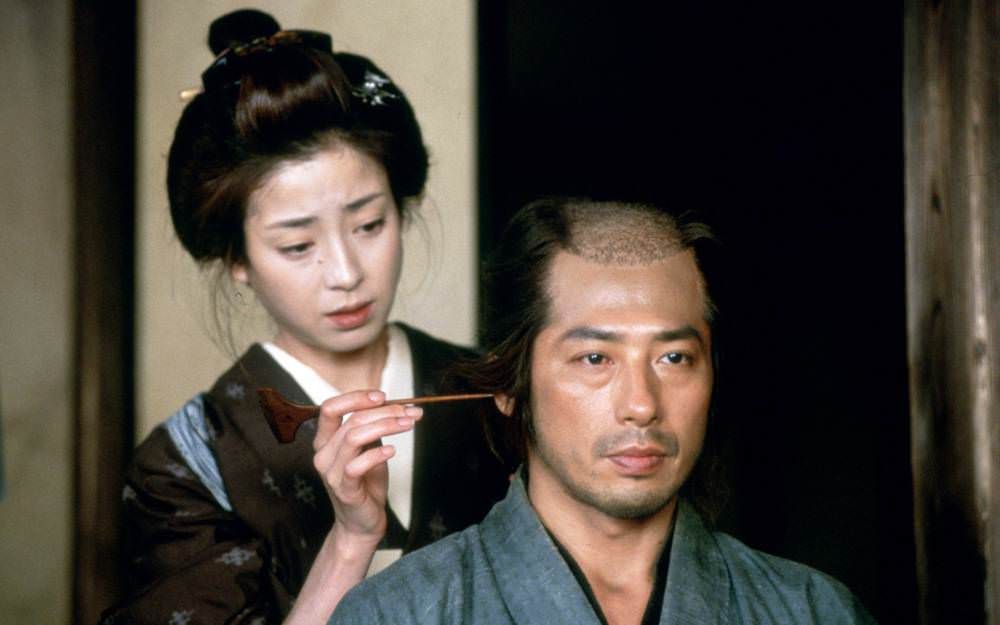
I suppose it could seem somewhat clichéd that a list of Japanese films includes at least one samurai film. But The Twilight Samurai is a wonderful film, one that celebrates all that is good and great about the genre even as it puts it through some deconstruction.
The first in veteran director Yamada’s samurai trilogy (the other two films being The Hidden Blade and Love and Honor), The Twilight Samurai is the story of Seibei (Hiroyuki Sanada), a low-ranking samurai who spends his days, not defending clan honor with his sword, but rather, working as a bookkeeper cataloging his clan’s food supplies. His wife’s recent funeral has left him and his two daughters destitute, so much so that he’s unable to go out drinking with his fellow samurai, who continually deride Seibei’s shabby look and familial devotion.
All told, Seibei seems more inclined to be a farmer than a proud warrior; he’s much more at home working the earth with his beloved daughters. But a chance encounter with his childhood sweetheart, sudden clan upheaval, and the surprising revelation that humble Seibei might actually be a swordsman of great skill begin unraveling his unassuming life.
The Twilight Samurai is told from the viewpoint of his youngest daughter, now an adult and close to the grave herself. Thus, the entire film is essentially a reminiscence, creating a poignancy that is only enhanced as we watch Seibei’s growing feelings for his sweetheart, and his obvious yearning for a simple life with his family — something that becomes increasingly endangered as the film progresses.
The samurai genre is one full of tales of honor and courage (e.g., The Seven Samurai, Hiroshi Inagaki’s Samurai trilogy, Hara-Kiri). And The Twilight Samurai is no different, but it looks at honor and courage from a different perspective. Throughout the movie, Seibei rejects the honor and glory that those around him seek, yet there’s no doubt he’s an honorable man, as his devotion to his family, and to Tomoe (his sweetheart) proves. It’s a smaller, perhaps less awe-inspiring honor that doesn’t necessarily involve valiant deeds and courageous battles, and yet it’s worthy of great stories nonetheless.
But always, Sebei’s quest for honor is fraught with peril, be it from Tomoe’s furious and abusive husband, the scheming officials who view Seibei as little more than an instrument to act out the clan’s will, or the simple fact of Japan’s modernization (which threatens to render samurai useless altogether). Seibei is caught between two types of honor, one that drives him towards a simple life with the family (and woman) that he loves, and one that compels him to fulfill his obligations to his clan, superiors, and social status. It is this struggle, handled so deftly and subtly by Yamada, that becomes the film’s focal point, and while the film does have something of a happy ending, it is one that is ultimately bittersweet.
Voices of a Distant Star by Makoto Shinkai
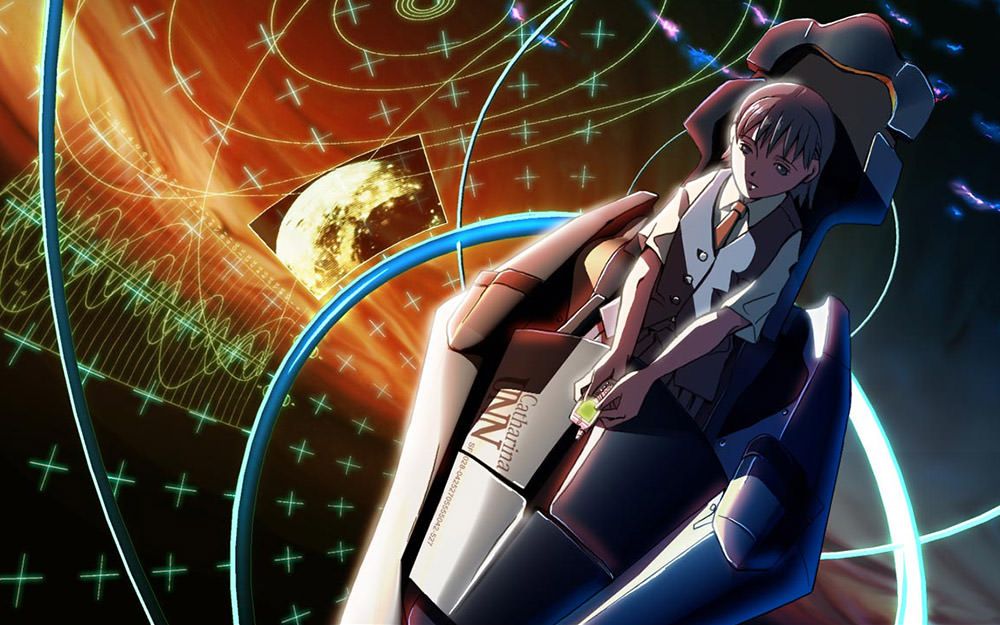
Voices of a Distant Star is an impressive work just based on the effort involved in producing it. After spending time as a graphic designer for a video game company, Makoto Shinkai quit his job and proceeded to write, produce, and animate Voices of a Distant Star entirely on his own using his Macintosh computer. Such a one-man effort is virtually unheard of in animation. But what makes ultimately makes Shinkai’s short film (it’s less than half an hour in length) worth celebrating is not Shinkai’s tenacity, but rather, the poignancy contained within it’s simple sci-fi romance.
In the not too distant future, Earth is at war with aliens. Young Mikako has been drafted into the military and being sent to join the battle in space, leaving her boyfriend Noboru behind. The two, however, continue to e-mail each other via their cellphones.
But as Mikako travels further into space, it takes longer and longer for them to receive each other’s messages. Also, due to the cruelties of faster-than-light travel and special relativity, Mikako ages more slowly than Noboru. Mikako may only be 15 when she sends a message, but by the time Noboru receives it, he’s 24.
To be sure, there’s a fair amount of melodrama in Voices of a Distant Star. But it’s tempered by the intriguing narrative structure, which includes several surreal flashbacks/visions, the scientific concepts at play (when was the last time you watched something in which the laws of relativity were a central plot device?), and Shinkai’s lovely, graceful animation. (He might not quite be the next Miyazaki, as some have said, but in a few more years, who knows?)
And even though Voices of a Distant Star contains many of your typical sci-fi anime clichés (e.g., mecha, aliens, spaceships), those things are not at all the focus of the title. Rather, Shinkai focuses on the little details — a rainy afternoon spent in a shelter, a bike ride together, going to the convenience store — which make the couple’s relationship so involving, and their plight so poignant.
Voices of a Distant Star ends, not surprisingly, on a bittersweet note. We know the pair are doomed lovers, be it due to alien attack or the ravages of interstellar travel. We know their love, and lives, are fleeting, as emphasized by the huge gaps of time involved in the couple’s communication. And though the film’s ending is rather open and vague, it’s also quite fitting, and contains a strange blend of sorrow and hope. Perhaps, as hinted at by the strange visions, love can survive the vacuum of space, the gulfs of time — but that doesn’t diminish the sorrow whenever it suffers some sort of ending.
This entry was originally published on Filmwell on .